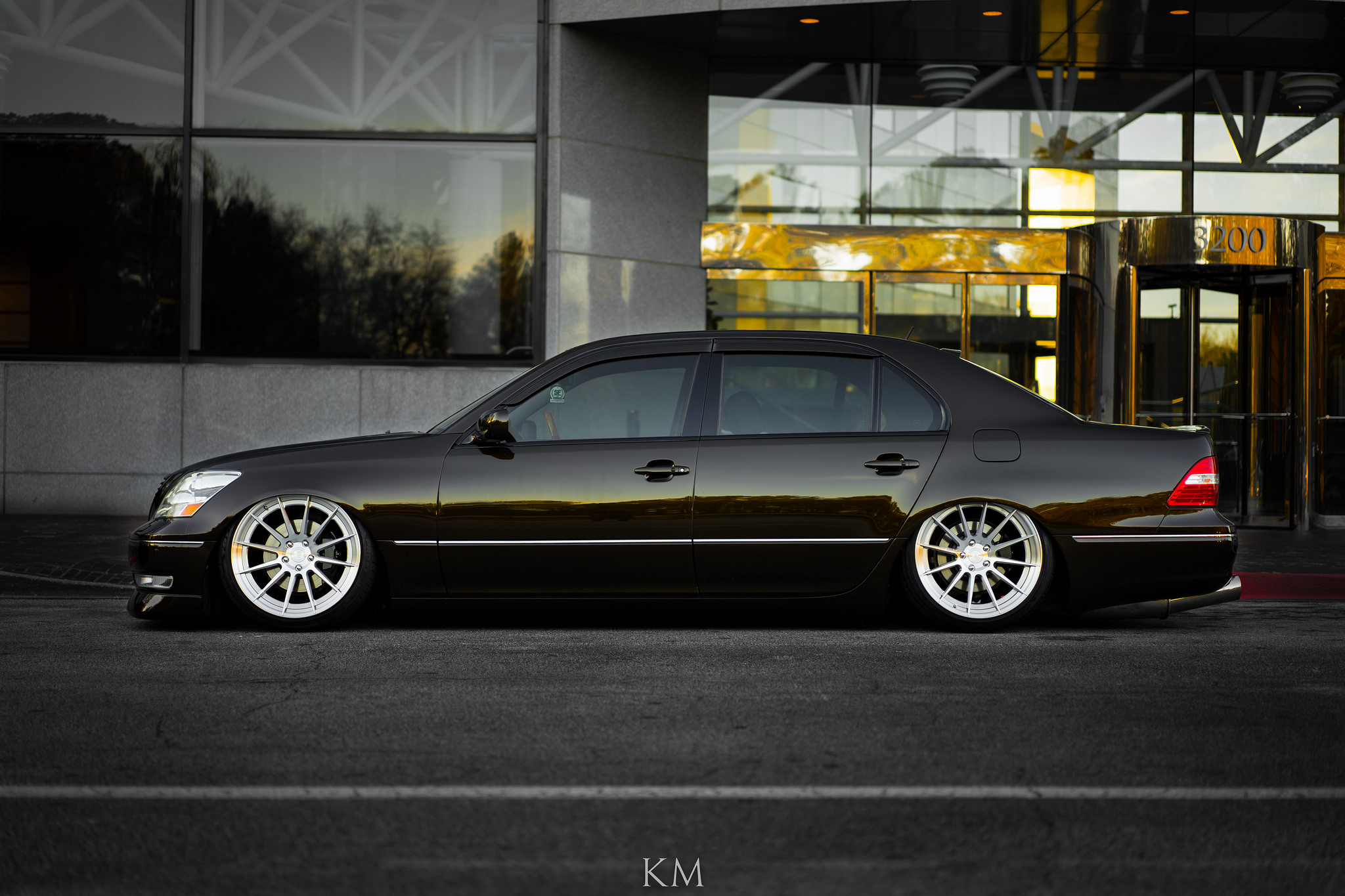Why adding a HID kit to your car with reflector housings makes you a ricer…
Ok, another fun rant for everyone…well, maybe not everyone. Those of who you care about “doing things right” and research your modifications before installing them, I’m not looking at you. Yes, there are correct ways to retrofit HIDs into your car that came with reflector housings. If you have done this, thank you and good job. If you have OEM projectors and have put HIDs in, then you’re fine as well. The ones I am looking at, again, are those who blindly throw parts at their cars without even the basic understanding as to what they are doing. Today’s focus is lighting. With the introduction of H.I.D (high intensity discharge ) or “Xenon” lighting in automotive applications, drivers have been given a better and safer way to see at night….mostly. This types of lights started out as OEM options and have slowly (well, back then) trickled their way down to the average consumer for a low price. At first, to have Xenon lighting in a car that did not come with it required getting a hold of an OEM setup, which was (and still is) very expensive. As aftermarket manufacturers saw the demand for these kits, they flooded the market with them for every automotive bulb under the sun. While a benefit to some, it has been a glaring problem to many motorists. Far too often, owners who like to modify their cars have been like horny leg-humping dogs by sticking these lights in every hole they can think of…weather they belong there or not. Not only have the applications of many of these lights been wrong, manufacturers have even gone as far as to manipulate the technology of these light to produce some of the most annoying and unusable lights ever conceived.
Let’s look at a few basics.
Photo source: THE RETROFIT SOURCE
Reflector vs projector housings..in one simple picture-
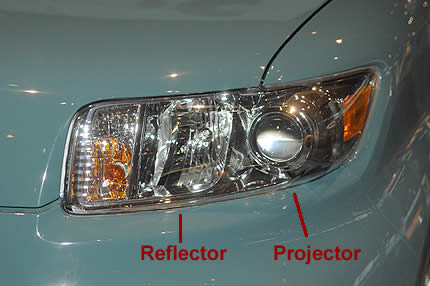
What is a H.I.D/Xenon bulb anyway? Well, your regular halogen bulb that has been standard for decades is nothing different in design than your typical household light bulb. It works by passing energy over a small filament which in turn causes the filament to become super heated and produce light. We should all understand how this works. Like this-
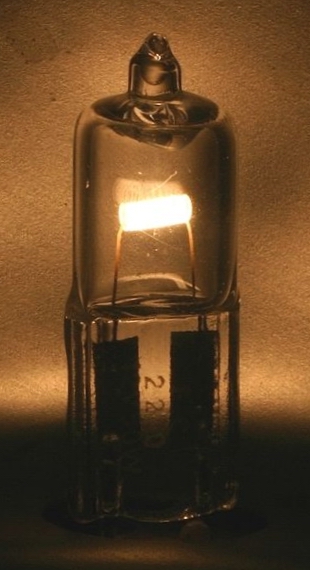
In HID or Xenon lighting, a small arc of energy is passed through various gases and elements. This arc produces the light you see. It works like this-

Let’s discuss the two types of light bulbs and the two types of light housings used on cars today.
Now for a general light, this really is no different other than overall light output. The HID is able to produce a brighter light with less energy. But when it comes to automotive applications, things change…a lot. Automotive lights are designed in a very specific manner in order to put light where you need it, and not put light where you don’t, as in putting light on the road and not in oncoming driver’s faces. The general standard for years has been a halogen bulb in a reflector housing. In this housing, bulbs have a shield built into them to help control light output. Think of it like walking though a dark room with a candle to light your way. Notice that when you do this, the glare from the candle hurts your ability to see what you are trying to light up. What do most people do? Well, instinctively most people put their hand between their eyes and the candle. This is the same concept on most halogen bulbs and is designed to only allow light into a specific part of the reflector housing. You can see it here as a little piece of metal next to the filament-

And this is the desired effect of all of this. The location of the filament and the shield are super critical in the design of a reflector, changing the location of the filament’s location even a couple of millimeters will change every angle at which the light travels, ultimately letting light go in places it was not designed to. This is is also the exact same reason why your high-beams project light much higher and wider- because the high-beam filament is not shielded and placed in a location that causes the light to scatter in a different direction.

There are many cars with projector lenses that use halogen bulbs. But the bulbs used in the projector housings do not, I repeat, do not have a shield on them. This is because the way a projector housing works, the lens (and if applicable, the shield build into the housing) does all the focusing. In some projector setups, both high and low beam patterns are available and are controlled with a movable shield. Here is an example of what I am talking about-

..and this is how a projector housing works-
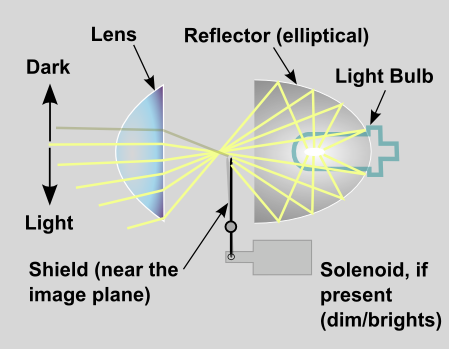
Now when it comes to HID lights, almost all of the cheap/regular kits for most all bulbs are unshielded. There are a few exceptions that have a shield operated by a solenoid, but generally speaking most, if not all of your average HID installs in reflector housings are done wrong.
You average HID bulb looks like this-

Notice the little bubble in the middle? That is where the arc is produced and where the light comes from. Notice the difference in the following picture of the location of the halogen filament vs. the location of the HID “filament”. This is the root cause of why putting HIDs in reflectors is never a good idea-
Upon changing the location of the actual light source, you get massive amounts of light scatter (glare). This is what is very bad and annoying to all other drivers on the road. You are essentially blinding them as if you were driving with your high-beams on. I’ve heard many people exclaim “but I can see so much better with my HIDs (in reflector housings)”…and this is only true because you are scattering light all over the place. Here are some examples of what I am talking about-
Halogen in reflector-

Halogen in projector-
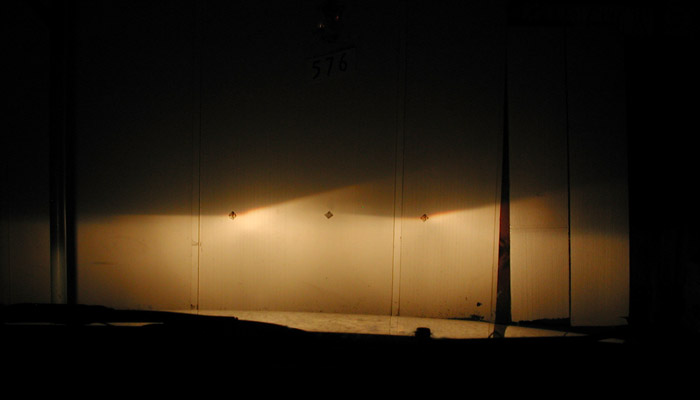
HID in reflector housing-

HID in projector-


Notice all the light scatter/glare that is up higher than the “cut off” line? That is bad…very bad. I could post up numerous examples of this all day long. Even while it “might not look so bad”, it is bad. Aiming your headlights down won’t help any either. All aiming your lights down will do is move the focus point down, but glare will still be emitted up and out. Oncoming drivers will see this. Most people might thing your brights are on too….even though they’re not. Both of the car in the following picture are equipped with traditional halogen reflector housings..but one of them had improperly installed HID lights, can you tell which one is which?
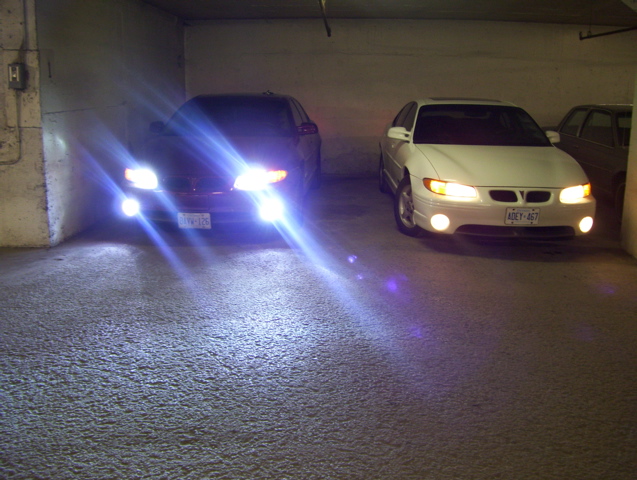

See how bad that is? Sadly, none of the people doing this actually care they are blinding other drivers…nor do they really listen to those who care to inform them politely.
Lastly, we have color. For whatever reason that I may never understand, people seem to love the blue/pink/purple lights too. They think it looks “cool” or that they can see better with it. In fact, no matter what the reasoning is, they are 100% dead wrong. HID lights, as many know, are offered in different “K” ratings. This is for Kelvin. The Kelvin range describes light at different frequencies. Here is a simple way to understand Kelvin (K) and light output-

In reality, anything above 5K is really not any more helpful or useful to the human eye. In fact, the lower the Kelvin rating, the “better” it is for your eyes. Natural sun light is actually pretty yellow. Regular halogen light is also on the yellow scale. The human eye likes this and is why we can see the colors we see. Notice with a blue or red light how everything looks a single color? This is the same for HID lights in the 8K+ range. Your eye does not like the frequency and takes much longer to adjust as well as a severe loss of detail when looking at something. This is actually why police lights are blue…because they’re VERY attention getting and police want you to see their blue lights from as far away as possible…so you know they’re there. Blue/purple/pink headlights are terrible for your eyes. I could actually give much more detailed information as to why, but I don’t need to be that technical right now. Just know, and please understand why all of this is so bad.
TL;DR? Just read this:
If you put HIDs in your car and they don’t look almost exactly like this-

Then you are doing it wrong and irritating everyone driving down the road at night.
If your lights looks like this..regardless of the HID in reflector housing…


…you are a complete and useless ricer who shouldn’t be allowed to own a car.
Finally, if you want to read a very in-depth article about HID vs halogen and light spectrum, here is a great article.
Leave all questions comments and concerns below…
For quality lighting products shop


